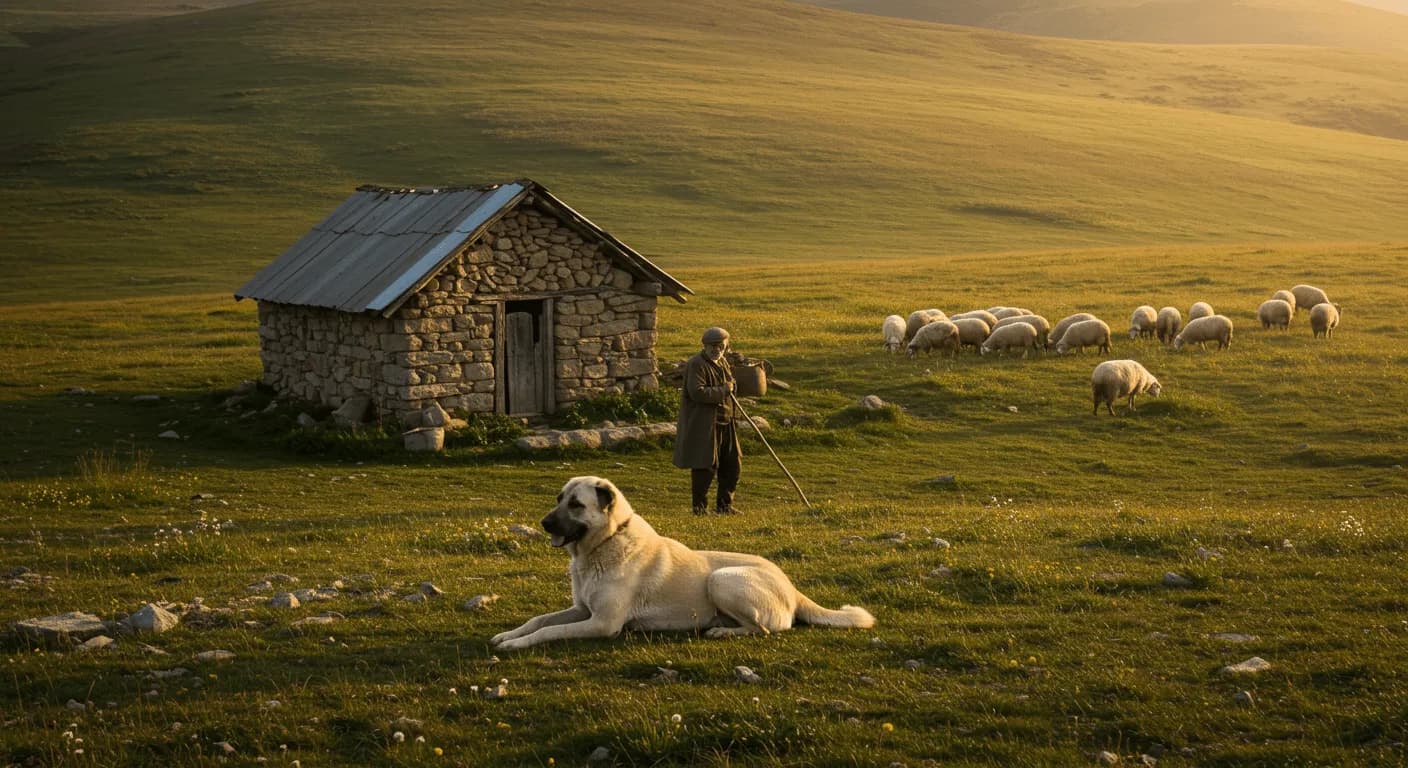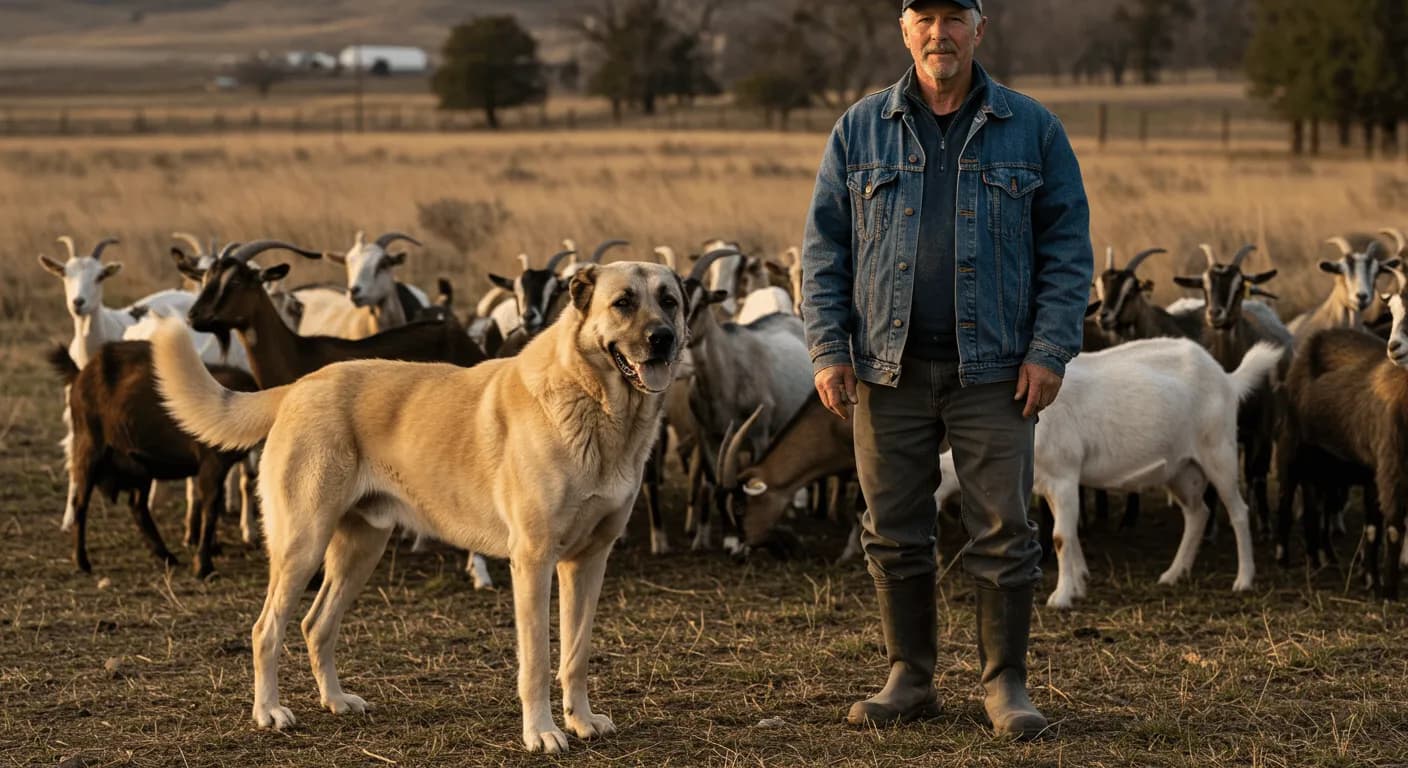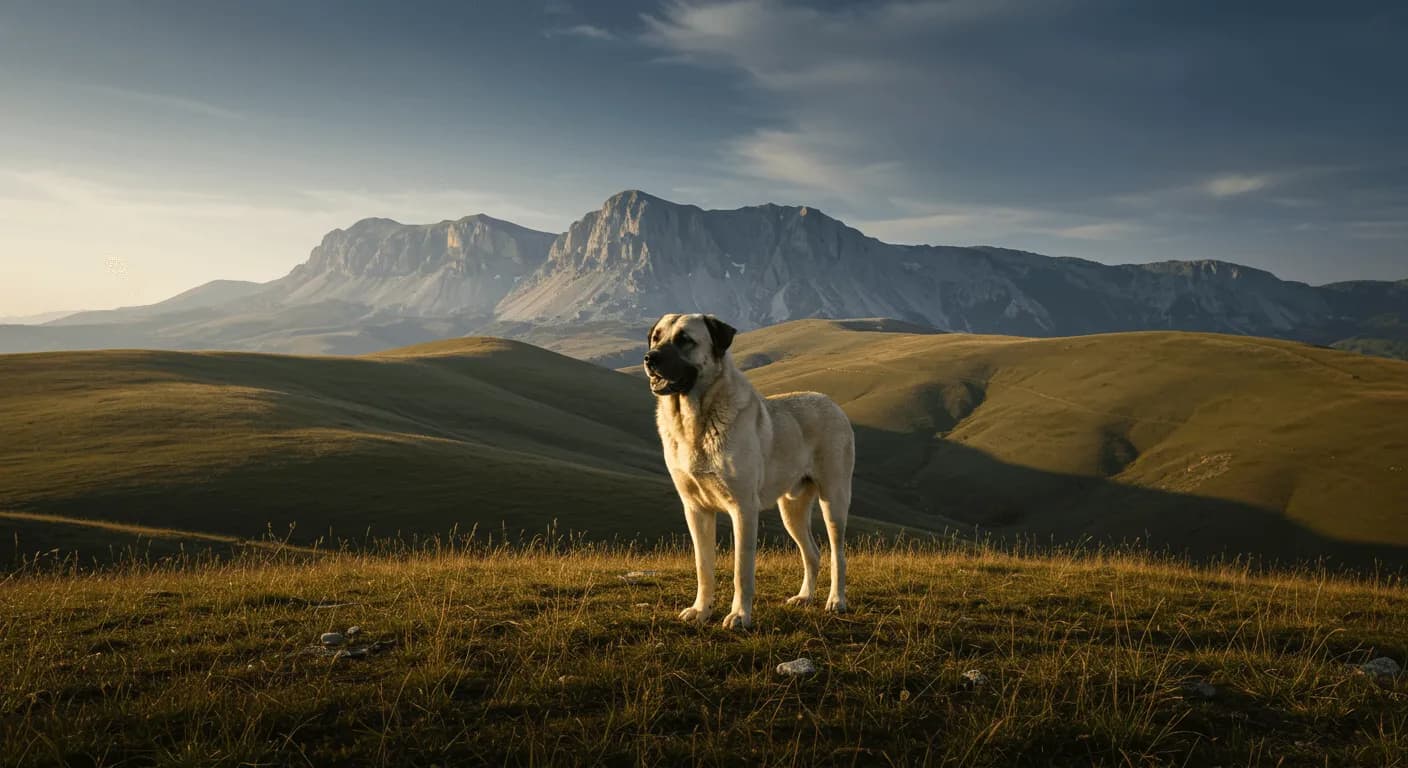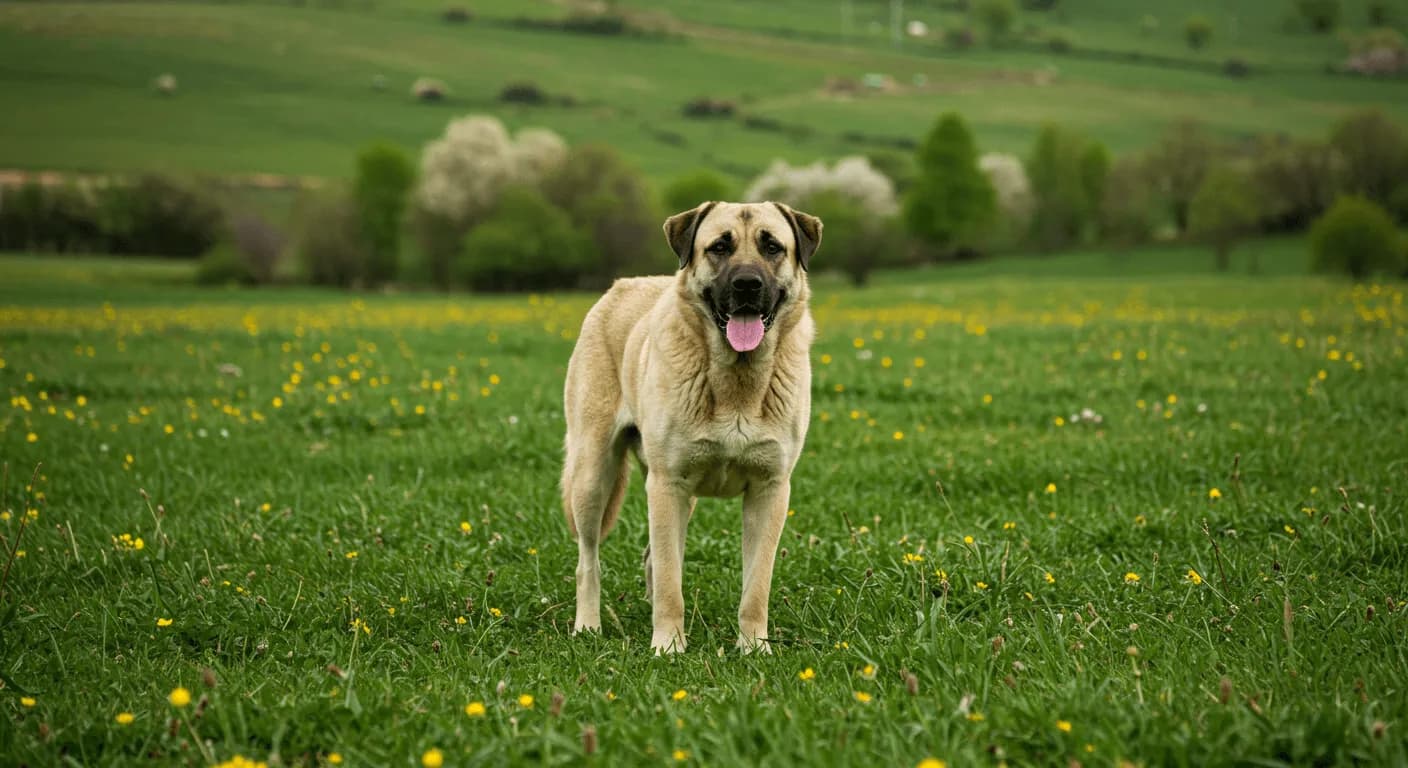The Kangal Dog is a formidable and majestic guardian breed, best known for its unmatched loyalty, strength, and connection to Turkish culture. Often referred to as the national dog of Turkey, the Kangal boasts a fascinating story rooted in ancient times, shaped by harsh climates, demanding work, and centuries of selective breeding. In this article, we’ll explore the intricate and captivating history of the Kangal Dog—from its prehistoric ancestors to its recognition in the modern world.
Kangal Dog History and Origin
To understand the Kangal Dog's history and origin, one must travel back thousands of years to the rugged steppes and plateaus of Anatolia, modern-day Turkey. The beginnings of the breed are interwoven with the early development of agrarian societies and livestock domestication.
Earliest Known Ancestors and Genetic Lineage
The Kangal Dog traces its roots to the ancient livestock guardian dogs (LGDs) that accompanied early Neolithic shepherds across Mesopotamia. These shepherds required large, powerful dogs to protect their flocks from predators such as wolves, bears, and jackals. Many experts believe the Kangal Dog is genetically related to ancient mastiff-type dogs of the Middle East and Central Asia.
Recent genetic studies have shown that Kangals are genetically distinct from other large guardian breeds, which supports the idea that they have been regionally isolated over time. This uniqueness has helped develop a consistent bloodline, forming what is now referred to as the Kangal Dog's bloodlines history.
Prehistoric Environmental Context
Anatolia’s high plateaus and mountainous steppes shaped the dog that would become the Kangal. The climate is harsh—cold winters and arid summers—and the terrain is vast and rugged. Dogs who could traverse these conditions, endure limited food rations during lean periods, and still fight off apex predators were the ancestors of the Kangal.
Where Kangal Dogs Came From
Understanding where the Kangal came from gives us greater insight into its abilities and temperament. The Kangal Dog was first developed in the Sivas region of central Turkey, specifically in and around the town of Kangal, from which it draws its name.

Country and Native Landscape
So, what country the Kangal came from is not debated: the answer is Turkey. More precisely, it is the rural heartlands of central Anatolia. These lands have long supported sheep and goat pastoralism, thus creating a critical need for reliable livestock protectors.
Cultural Significance and Environmental Influences
In Turkey, the Kangal Dog has deep cultural significance. It is seen as both a working animal and a symbol of national pride. Local Turkish shepherds have passed down these dogs over generations, favoring the strongest and most reliable individuals to serve not just as workers but protectors of entire communities.
The environmental demands of Anatolia—low population density, broad pastoral lands, limited external dog influence—helped create an isolated ecosystem for the breed. This built a uniformity in the Kangal Dog’s temperament, size, and working ability.
Historical Purpose and Function
Knowing what the Kangal Dog was bred for provides key details into its behavior today. From their first days, Kangals were bred to guard sheep and goats from the many predators that roam Anatolia.
Original Working Role
The primary function of the Kangal was (and remains) as a livestock guardian dog (LGD). Unlike herding dogs, LGDs such as the Kangal don’t move livestock—they live with the herd and defend them against enemies.
Specific Tasks and Contributions
Their tasks traditionally included:
- Protecting flocks during transhumance (seasonal movement of herds).
- Patrolling grazing areas with or without human accompaniment.
- Engaging and repelling wolves, jackals, and even bears without direct command.

Economic and Social Importance
These dogs were economically essential to pastoralism in Turkey. A good Kangal could prevent large losses of livestock, preserving the shepherd’s livelihood. Socially, well-respected dogs were sometimes gifted as tokens to neighboring villages or foreign dignitaries, signifying friendship and alliance.
Over time, the role of the Kangal expanded beyond the farm. They were used to guard homes, act as deterrents to thieves, and even serve in rural law enforcement in some regions.
Evolution of Breed Function
With changes in agriculture and conservation efforts, Kangals today are being used not only at home but internationally. How the Kangal was developed—by selectively breeding the most effective guardians—has enabled it to be exported to countries in Africa, where they are now protecting endangered livestock from cheetahs and lions in conservation programs.
Naming and Nomenclature
Uncovering how the Kangal got its name gives additional cultural context. The breed’s name is directly tied to the town of Kangal in the Sivas Province of Turkey.
Etymological Root
The name “Kangal” is believed to derive from a Turkic root word, possibly referring to a clan, tribe, or even a regional administrative post in the Ottoman era. The breed was referred to by different functional names throughout history, such as "Çoban Köpeği" (literally "shepherd dog" in Turkish), but the name Kangal became firmly associated with the specific phenotype and behavior of guardian dogs from that region.
Cultural and Linguistic Origins
- "Kangal" in Turkish is both a geographical term and, by the 20th century, a breed designation.
- In Turkey, it is common to call the breed by both their location and purpose, hence “Sivas Kangal” or “Kangal Çoban Köpeği.”
The First Known Mentions of the Kangal
Definitively establishing the first known mentions of the Kangal Dog is challenging due to gaps in documentation, but there are references in Ottoman manuscripts from the 17th and 18th centuries that describe large, pale-colored guardian dogs in the region of Sivas.
European visitors to Anatolia in the 1800s also documented the presence of large “Turkish mastiffs” that match the modern Kangal’s descriptions.
However, it wasn’t until the mid-20th century that the Kangal Dog was recognized by organized kennel clubs and official breed historians.
When the Kangal Was First Bred
While the modern form of the breed was formalized in the 20th century, evidence suggests that Kangals were first bred at least 1,000–1,500 years ago, if not earlier. They are part of a long tradition of Central Asian guardian dogs that moved west with nomadic herders, such as the Oghuz Turks.
In the 1960s, Turkish scientists and breeders working with U.K.-based breed enthusiasts began establishing breed standards, ultimately leading to international awareness of the Kangal Dog. By the 1980s, the Kangal Dog was first introduced to the United States, marking a new chapter in the breed’s global story.
When the Kangal Came to America
The Kangal Dog came to America in the late 1980s when a small number were imported by livestock owners and dog enthusiasts interested in their protective qualities. Breeding programs like the Kangal Dog Club of America and the United Kennel Club helped establish a controlled population and promote ethical breeding based on foundation stock from Turkey.

Kangal Dog's Historical Impact and Legacy
The historical impact of the Kangal Dog goes beyond simply guarding livestock. They are cultural icons in their native land and symbols of resilience, loyalty, and protection.
Societal Contributions
- Served as guardians for entire villages.
- Integral companions for nomadic and semi-nomadic herders.
- Distributed as diplomatic gifts to Middle Eastern royalty.
Influence on Human Activities
The presence of Kangals enabled herders to utilize wider pastures without the constant threat of predation, which expanded the scope of pastoral economies. Today, their use in predator control in Africa has helped reduce the need for lethal predator management, creating a win-win situation for wildlife and agriculture.
Historical Recognition
While not formally recognized by the American Kennel Club (AKC) due to political and breed purity discussions, the United Kennel Club (UKC) and the Fédération Cynologique Internationale (FCI) list the breed under specific standards. The Republic of Turkey has officially declared the Kangal Dog a national treasure.
Ongoing Significance
Breeders and conservationists continue to focus on:
- Preserving the purity and working ability of the breed.
- Educating the public on responsible ownership.
- Exporting the breed to areas with predator-livestock conflict.
Important Facts In Summary
Here’s a brief list of key points we've uncovered:
- The Kangal Dog’s history and origin trace back to the ancient livestock guardian dogs in Anatolia.
- Where the Kangal came from is clearly central Turkey, especially the Sivas region.
- The breed has a unique and ancient bloodline, developed in isolation.
- When the Kangal was first bred is estimated to be over a millennium ago.
- The breed’s original role was guarding livestock from dangerous predators
- How the Kangal was developed involved selecting individuals for strength, size, and loyalty.
- The first known mentions of the Kangal appear in Ottoman archives and 18th-century traveler diaries.
- What the Kangal was bred for continues to define the breed: defense and protection.
- Its name comes from the town of Kangal, deeply connected to Turkish pastoralist life.
- When the Kangal came to America was in the 1980s, expanding the breed’s global impact.
Unquestionably, the Kangal Dog is among the most fascinating guardian breeds in the world, rooted in hardship, shaped by necessity, and elevated by the devotion of human hands.## Conclusion
The Kangal Dog stands as a living testament to the enduring relationship between humans and animals shaped by necessity, environment, and culture. With roots deeply embedded in the tough terrains of Anatolia, this ancient breed has held its ground as a fearless guardian, a cultural symbol, and a trusted companion for centuries. Its journey from the shepherd's fields of central Turkey to international recognition showcases its adaptability, resilience, and unmatched protective instincts.
Through understanding the rich tapestry of the Kangal Dog’s history and origin, from its early development to its global legacy, we gain not only historical insight but also a deeper appreciation for the role dogs have played in human survival and success. As guardians of flocks, homes, and traditions, the Kangal continues to be cherished both in its homeland and abroad, securing its place among the most respected and admired working dog breeds in the world.


